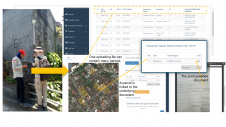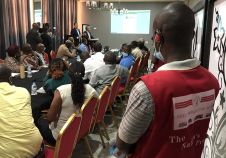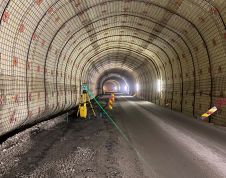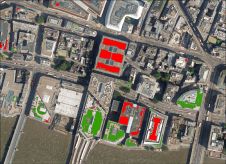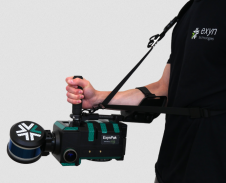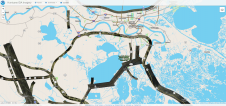Open Data and Quality
几十年来,许多GIS用户都忽略了使用地理数据的基本维度的质量。由于开放数据和将地理数据组合的趋势来自各种各样的来源,现在一个人面临一个数据集和另一个数据集之间产生的差异的困境。与此同时,很多人都烧掉了他们的手指,突然存在:经过几十年的忽视,质量问题现在出现在GIS用户议程上。其中很少有人掌握主题不仅是关键,而且很复杂。为了说明质量挑战的规模,我将专注于相当技术的主题:精度测量,特别是CE90,RMSE和σ。我很欣赏,这些可能是许多人的陌生条款。CE90代表'90%信心的循环错误'。在美国二战期间开发的这种准确性标准是一种方便的单次,用于描述(Ortho)图像或地图的准确性。它表示为图像中的任何点的水平距离将与地面上的实际位置不同90%的时间。为了计算距离,使用一组地面控制点(GCP)。 The coordinates of the GCPs in the image are measured and subtracted from the actual values as measured in the terrain by an accurate device, e.g. a high-definition GNSS receiver. Graphically this may be interpreted as the radius of a circle, which contains 90% of the residuals (red circle in Figure). Root mean square error (RMSE) and standard deviation (σ), which are other measures of precision, are directly related to CE90. The planar or circular RMSE, obtained by combining the RMSE along the X axis and the RMSE along the Y axis using the Pythagorean theorem, is 0.466 x CE90 (yellow circle in Figure). If positional precision is given as σ, which is usually derived from an RMSE computation and set equal to the RMSE, CE90 and σ can be easily converted. As a rule of thumb, σ gives a two times better impression of precision than CE90. Whatever measure of precision is used, if positional precision is key for the task at hand it is wise to validate the communicated values by measuring accurate GCPs, well distributed over the scene, oneself. This is also to identify possible space dependency of the error distribution which can be analysed and visualised by drawing vector plots.
Make your inbox more interesting.Add some geo.
Keep abreast of news, developments and technological advancement in the geomatics industry.
Sign up for free












